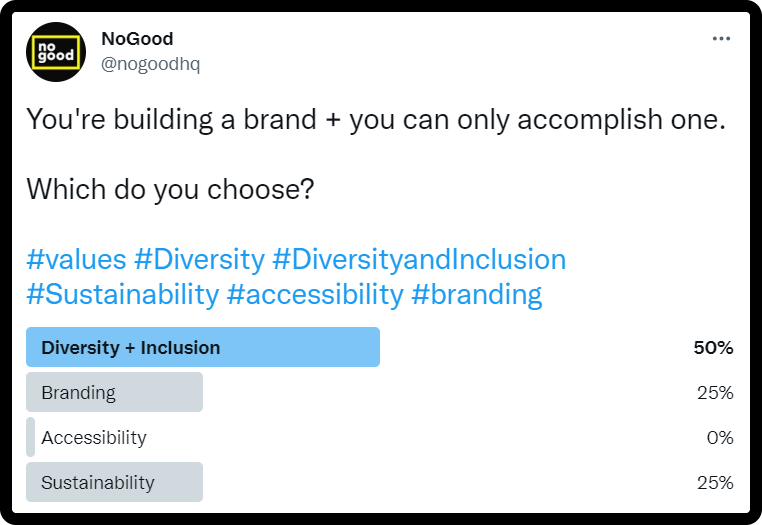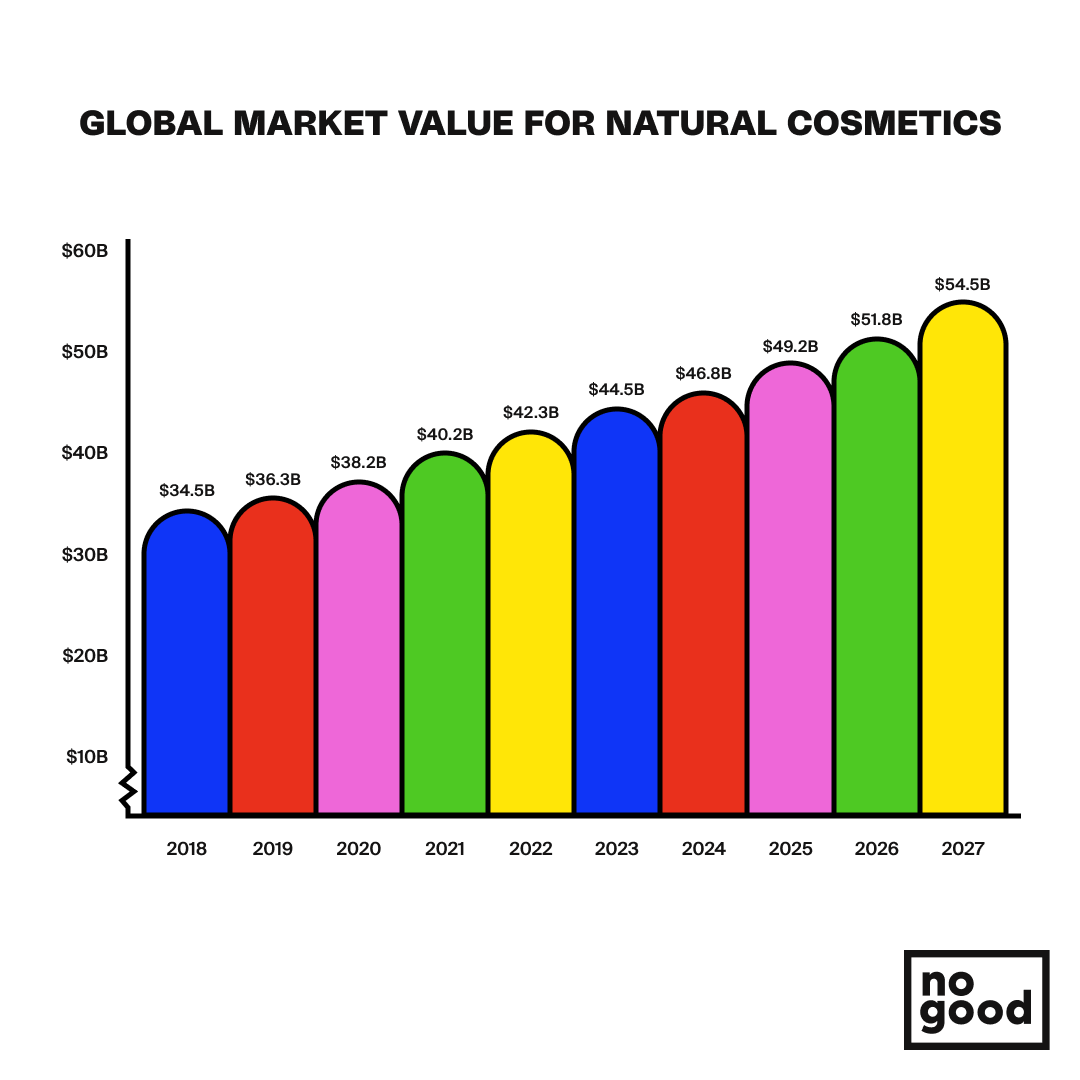Content is one of those things that means something different to everyone you ask, depending on who you’re asking. If you ask an SEO, they’ll tell you content is blog posts. If you ask a content creator, they’ll tell you that it’s TikTok videos. If you ask an email strategist, they’ll tell you it’s an email flow. The incredible thing about content though, is that they’re all right and brands are now, more than ever, looking to content as a major component to their growth strategies.
Content marketing is all of these and so many more, and if we’re going to be exact it’s all of these things specifically:
- Blogging *You are here.
- Video
- Podcasting
- Visual content
- Ebooks
- Lead magnets
- Whitepapers
- Presentations
- Quizzes/tools
- Checklists
- Courses
- Webinars
- Slide decks
- Free apps
- Social media
- Landing pages
To put it simply, content is any form of media that serves to not only provide information to its intended audience but value as well. It serves as a premeditated, high-intent, strategic approach to ensuring that you meet your audiences on their intended channels with exactly the information they’re looking for — even before they know they need it.
The above list tells us that there are varying degrees of content, running from short-form video, to long-form video, Tweets vs. Blogs, SMS messages vs. emails — it goes on.
What’s the point? They all have their place. I’ve absolutely been in situations where I’ve turned my nose up at an assignment because “That’s not content!”
Spoiler alert: It was.
In fact, one of my favorite pieces of content in recent history came in the form of an SMS message from Breathwrk which just said, “U up?”
Was it effective? I was up, I opened the app, I did a breathing exercise, and fell asleep — you bet it was effective. I’m also still talking about it, so there’s that.
But why male models content?
Many have referred to this age of marketing as both the content economy, and the age of authenticity, and there are a number of reasons for that. It may seem somewhat abstract, but content really is the currency of our times, and brands are now our friends – kind of.
Let me explain.
While traditional advertising and marketing channels overtly subjected audiences to their product through commercials, billboards, and other forms of media that were, for all intents and purposes unavoidable but accepted as the status quo, modern audiences and communities now have more power of choice than ever before — and brands must adapt.
Though still transactional, traditional avenues for advertisers took the form of financial exchanges between broadcasters and media platforms for access to audiences through the form of ads. In print media, this meant buying ad space. For television media, this meant buying commercials. Simple.
The modern process is still transactional, though the transaction is happening directly between the brand and its audience — not including paid media which follows similar principles to traditional advertising mechanisms.
Through the advent of social media, brands have been given direct access to communities and are trading entertainment and information with them in exchange for their time and interest — building long-standing relationships which accrue to longer LTV for brands than traditional marketing systems focusing primarily on top of funnel conversions. These transactions are driven through content in its many forms to provide a direct value to communities, audiences, and potential customers.
While this process may arguably be more time intensive than just putting your entire marketing budget into social ads, the relationship and trust built with the customer through the process not only increases the likelihood of repeat business but also of turning customers into brand advocates in order to increase referrals.
Channel Surfing
If you’re familiar with our approach to growth, you’ll likely know that we never advocate for a “one size fits all” approach to any growth strategy. The reason for this is fairly simple – no two brands are alike, so each brand needs a nuanced and brand-specific approach to content.
For each channel, there are specific demographics associated with them to be targeted, standards for their content, cultures, and subcultures, and other forms of specificity that are taken into account when formulating a comprehensive content strategy.
Though we generally recommend doing a deep dive into each platform to determine where competitors have footholds, where demographics are very represented, and where audiences and content are best aligned with your brand, we’ve broken down each platform with a simple growth strategy to show how they can be best utilized in your content stack.
It’s also important to keep in mind that the goal for whatever channel(s) you choose, the goal will always be developing connections, and building community. It’s these connections that will allow you to not only build relationships with your audience to win those sweet, sweet, conversions, but to also encourage your audience to share your content and advocate for your brand.
***DISCLAIMER***
This is comprehensive, but in no way exhaustive — please spare our inboxes. We know that TikTok has live streaming and Twitch has clips — even Reddit has live streaming now. As much as we’d love to cover every single platform for content, it’s just not possible. But we did our best, included the platforms we recommend most frequently, and consciously left out those that are either too niche or not applicable to most use cases.
Anyway…you’re welcome!
Video:
Video is quickly becoming the medium of choice for content creators and marketers alike as barriers to entry for production are reduced to little more than a smartphone. Video is not only the most personal delivery method for content but also provides the most accessible entryway to both long and short-form content allowing users a passive means to information, as well as a faster way to access quick bits of information.
As a mechanism for growth, video content is an incredible way to build audiences, drive authority in your space with edutainment content, and establish trust with audiences through social validation — seeing is believing after all.
Long-Form:
YouTube:
Brands Strats:
With 2.6 billion (with a b) users as of 2022, YouTube has developed a long-standing foundation of extremely niche and dedicated communities for brands to engage in with both their own content and UGC.
Due to the platform’s preference for long-form videos, with an average 11.7 minute run-time for content, brands have historically leveraged the platform for ‘edutainment’ content — content that is both educational and entertaining — see Purple Mattress’ content featuring Tim & Eric because why not?
This takes numerous other forms depending on the brand, varying from Leica’s approach of showcasing prominent photographers and their method of creation in order to engage viewers with insights into the capabilities of their products while aligning organically with creators, to Ledger’s, School of Block, which employs a curated personality to provide comprehensive and engaging lessons on all things cryptocurrency.
UGC Strats:
The creator economy on YouTube is an incredible space for brands to find creators who specialize in their particular vertical and collaborate accordingly to build trust and awareness.
Leveraging experts on the platform to engage with products, give in-depth guides on how to use them, do product comparisons, or otherwise lend their authority within the vertical can help immensely with developing brand awareness and validate your brand to appropriate communities.
Within the tech space, Unbox Therapy has become a brand of its own, though the team behind the channel has also built themselves as a leader in new technology and has made + broken brands based on their feedback and collaboration due to the authenticity of their content, and the legitimacy they have built for themselves over the years.
Though they are specific to tech, similar experts exist and can be leveraged across nearly any product vertical to similar effect.
Short-Form:
TikTok:
Brand Strats:
Heavily favored by Gen-Z and millennials, with 47% of users being between the ages of 10 and 29, the platform is driven by virality and trends making it easy for brands to test new content ideas on a daily basis with rapid insights into their audience that can be leveraged for future content and other pillars of their growth strategy.
Due to the authenticity of the platform, brands can “show up as themselves” and focus less on being perfect, in order to establish valuable relationships with new and existing communities in order to nurture long-term connections with lasting customers.
Blurring the lines between UGC and brand, many brands are bringing on internal creatives who are assuming the role of the ‘face’ of the brand, or characters representing the brand, to create the experience of befriending brands or just…hanging out with them.
UGC Strats:
TikTok has been the champion platform for social validation as a means to growth. With UGC at the forefront of their monetization strategy, content creators allow brands to tap into existing audiences to create sustainable growth loops driven by authentic content.
By identifying creators who align with your brand and values, it is possible to leverage creators to advocate for your brand, generating opportunities for social validation where-in trust is built and audiences are encouraged to purchase products and share their own experiences — creating new loops.
Instagram Reels:
While initially seen as Instagram’s answer to TikTok, Reels does borrow heavily from the trend-driven nature of TikTok’s content and has been favored by Instagram’s algorithm to encourage brands to leverage Reels as a component of their content strategy.
However, Instagram has yet to lock down the magic that TikTok has captured with its virality-driven trend format leaving the platform somewhat open to interpretation and experimentation.
Brand Strats:
Not immediately burdened by the economy of authenticity, Instagram Reels still very much embrace the ‘Instagram aesthetic’. With an algorithm that has been heavily favoring reels over all other content, brands can run campaign content, edutainment content, and other high-polish content without worrying much about trending sounds or looking too much like an ‘ad.’ In fact, running ads is a solid approach for repurposing creative collateral to leverage the format without needing to spend any extra bits of your marketing budget — just ask Gucci.
On the same note, Reels are a great format for broadcasting impact initiatives, sharing metrics, and of course some delicious behind-the-scenes content.
UGC Strats:
Reels do kind of sit at the same table as TikTok in regard to UGC, particularly with the launch of their very own Creator Marketplace earlier this year. Partnering with creators to generate meaningful and impactful interactions with your product, whether that be testimonials, reviews, tutorials, or other form of interaction, is a fantastic way to build trust and reach new communities.
The best part is that depending on your agreement with the creator (because you did formalize an agreement didn’t you?) you can later re-use that content for your own feeds, or even repurpose it for ads. UGC is the gift that keeps on giving — and it’s giving authenticity vibes.
YouTube Shorts:
Brand Strats:
Similar to Reels, YouTube recently rolled out shorts to compete with the short-form video offerings of other platforms. This means, yes you guessed it, that the algorithm is heavily favoring the content people are publishing there.
While not every brand is in full embrace of the format quite yet, there is an opportunity for leveraging the space in a similar way to Reels while experimenting with new content formats.
Brands like Headspace are making headway (lol) by uploading short, meditative, content that gives users a break from the onslaught of competing content — allowing them to stand out against the noise.
UGC Strats:
With a rich and longstanding community of content creators (which we previously mentioned) Shorts are sure to provide brands ample opportunities for creator partnerships to give audiences bite-sized insights into their products or services.
The beauty of Shorts as a companion to Longs is that it provides the platform a unique opportunity for a more comprehensive campaign approach as compared to Reels and TikTok. Brands looking to leverage creators for content can not only build out a partnership for Shorts but pair the partnership with sponsorship for a Long to reach broader audiences and create a more comprehensive experience for audiences with their products.
Live Streams:
Live streams have become the next step for video content and an incredible way to connect with audiences to build long-standing relationships with them. Though live streams are really more of a content creator thing, there are some opportunities we’ve seen for brands to enter the space and do well for themselves by creating unique experiences for their communities.
Brand Strats:
Similar to the strategy behind bringing on in-house creators that we’ve observed on TikTok, brands are doing the same via live stream formats. We may have joked before about becoming friends with your favorite brands, but it’s actually a thing.
Formatting can be anything from watching movies together, showcasing products, speaking with guests, or any other variety of content. Computer manufacturers have leveraged live streams as a means of showcasing how well their products work with in-house creators playing video games live for their audiences, with beauty brands having live unboxing and showcasing of new products or glimpses behind the scenes.
This is still unexplored territory for many brands, but as creators start moving in-house, we anticipate movie nights, karaoke, and all other forms of live content emerging to build connections with audiences.
UGC Strats:
With creators at the helm of most live stream content, there’s so much opportunity for brands to leverage the space for meaningful and engaging content opportunities.
Whether seeding a product to sit in the background of a set for a well-known streamer for brand recognition, having a brand representative join a live stream as a guest, or sponsoring a stream with a giveaway, contest, or even a simple ad-read – the audiences of live streams are highly engaged and loyal to their favorite streamers.
Finding a steamer who aligns with your brand and becoming a prominent sponsor for their content can make your brand synonymous with a steamer, or even an entire streaming category.
Writing:
Newsletters:
A dedicated audience is quite possibly the most valuable thing a brand can have for leveraging existing communities as advocates, and there are few better tools to leverage that than a newsletter.
Newsletters provide brands an opportunity to send a direct, semi-personalized message to their audience to connect with them on a meaningful level and generally just share what they’ve been up to.

Unlike the hard sell of a marketing email, newsletters can be more informal, while remaining informative in order to build connections.
As a group that has a number of favorite newsletters, we look forward to them in our inboxes, send them to friends and colleagues, and secretly pretend they’re being sent just for us.
SMS:
A surprising favorite of younger audiences, SMS messages is a direct connection to your community, similar in the way that a newsletter is, and thus should be wielded carefully.
While brands have traditionally leveraged them for sending promotions or discounts, shifting messaging to content yields fantastic results and can be incredibly effective for building relationships with your community.
The previous example from Breathwrk is a fantastic example of this, where brands can send an occasional message just to check in and see how folks are doing, or share something they read recently.
Again, be friends with your brand, and as brands are friendly to your audiences – which obviously means sending them memes.
Blogs (Actually SEO):
Last time I’ll refer to brands as friends, but it’s really true and that’s how a good blog should serve. Everyone has that one friend who’s a little smarty pants and knows everything about everything – this should be the goal of your blog content, at least for your category.
Developing a blog with this mentality builds relationships so that whenever someone has a question about a particular topic in your category, they know they can count on you to answer it, or ask you if you haven’t already.
Having this be the goal of your blog, and optimizing it for SEO as a logical companion to a thoughtful content strategy that focuses on answering any and all questions about your category (like an exhaustive list of content channels) will lead to not only trust with your audience, but encourage shares, and build authority for high levels of discoverability.
Twitter:
Basically for self-serving, humble bragging, and self-importance – I’m kidding!
Twitter is a conversation platform disguised as a text-based social media platform. While a fantastic way to share thoughts and create incredibly condensed nuggets of information, Twitter is really best served and best utilized to go out into the wild and comment or reply to conversations happening.

Building your brand on Twitter with the intention of being part of the conversation, rather than the conversation itself, will help you immensely in creating a prominence within communities that will naturally come to you rather than doing what most do and shouting at them – nobody likes that.
White Papers:
Call us nerds, but we heckin’ love white papers. They’re honestly the most efficient content pieces you can possibly make and the quickest way to our hollow little hearts.
If you’re not familiar, a white paper is basically just a manifesto of a technical document that lays out what a company, brand, or project, is looking to accomplish and how – what more could you ask for?
A good white paper in the right hands can go viral and create a community almost overnight while simultaneously bridging trust and advocacy for everyone that reads it through a natural impulse to share.
Not something everyone needs to do, but dang we love a good white paper.
Audio:
Podcasting:
Conversations are a natural way to create growth for a brand because they allow similar natural alignments to occur as with other UGC formats.
While traditionally leveraged as a means of plugging content through sponsorships, content coming under the wing of the brand is something we anticipate seeing as creators come in-house.

Goop having Gwyneth chat with thought leaders is just the kind of thing we need to motivate us to buy some strangely scented candles – give us more of that.
The future is bright for podcasts as brands will inevitably take more risks, and have creators flex their category muscle to create interesting conversations to drive engagement with audiences and establish their expertise.
Spaces + Greenroom:
Podcasts, but make them live! Again, similar vibes to live stream video – an amazing way to incorporate audience interaction and connect with folks directly. Want to allow people to ask questions? Go for it. Want to have other industry experts chat? Go for it. The live format is emerging for brands and we’re here for it, and having more direct interactions between in-house creators and their communities will only build better, longer, relationships with audiences.
Visual Content:
Photos:
The format that built Instagram, photos are becoming outdated in the modern content landscape outside of photo dumps and otherwise becoming companion pieces to other content. They are, however, an unmistakable means of encouraging interaction and sharing.
While algorithms no longer favor still photos, there’s validity to the impact that seeing the factory where a product is built can have on an audience as opposed to telling them.

As we move forward into the economy of authenticity, and brands are being pushed more to peel back the curtain of production, photos will still retain their seat at the table when it comes to building brand aesthetic and authority.
There’s also something to be said about the sound-off nature of photos and being able to present an idea, concept, or aesthetic to an audience that instantly conveys a message without movement or noise and the ability to quickly share that single sensory experience.
Illustrations:
Similar to the creators being brought in for brands for TikTok and other platforms, the brand of content has seen heavy utilization of illustrators and other artists for years to great success.
Brands like Five Borough Brewery (and most breweries for that matter) have partnered with illustrators such as Paulina Ho to either collaborate or work in-house to create everything from content to packaging – enticing audiences that align with the artist or aesthetic.

If you’ve ever said something like, “That brand with the Instagram that has all the cartoons.” Then you’ll understand the impact that illustrative content can have on community building and brand recall.
Infographics:
chartr, need we say more? Infographics are highly shareable, easily skimmable, and a great way to drive authority with audiences to show that a brand does, in fact, know what they’re doing – there’s a reason we use them so frequently in our content.
Similar to photos and illustrations, incorporating infographics into a content stack can allow information to quickly be downloaded by audiences that will impact decisions they make for hours, days, and years to come.

You may have seen an infographic about the status of celebrity beauty brands, published by a smaller beauty brand, and recalled it when shopping for a new SPF face cream and it swayed your decision to buy that independent beauty product. Later you got home and shared your experience on TikTok and now a billion more people will try it – all because of that infographic.
Assets:
Assets are awesome, just ask the noun project or any other designer or brand or illustrator who has an asset library.
It could be something as simple as some free textures, a color palette, or any other form of creative downloadable, but the residual benefit and connection that comes with it are invaluable.
If you’re a beauty brand (next example will be not a beauty brand, promise) and release a set of Lightroom presets that people can use for editing their photos, boom, now you have a bunch of people publishing content with your brand’s aesthetic – magic.
Multimedia:
Courses:
Courses are great because they encourage people to share their experiences and advocate for others to take them too because they all want to be as smart as the first person.
They’re also great because they come with certificates, and certificates are shareable and become free advertising real estate on people’s social media and websites.
If you’re an SEO agency and wanted to offer a free course for SEO training, you can:
- Record the course.
- Create a quiz
- Make a certificate
Once you do that, people will want to share their results and tell everyone that they got a certificate because who doesn’t want everyone to know how smart we all are?
Landing Pages:
If you’ve ever searched for something, found a really amazing site that answered all of your questions, then clicked to the home page before spending two hours trying to navigate back to the page – congrats, you found a landing page.
And landing pages are just that. They’re pages built for SEO to satisfy very specific search queries to drive people down-funnel through pre-qualified high intent.
Let’s say for this one you’re building a shoe brand, and want to attract people with narrow ankles – don’t ask why.
You could do an SEO audit to determine how to optimize your page, and build the entire thing with sections talking specifically about the pain points of people with narrow ankles and why your product is the best for those audiences. They’ll then be primed to click over to the shop page.
Assuming your product is actually narrow ankle friendly, you’ll have won them as advocates to go and spread the word of your brand to their community of folks with narrow ankles.
Guides:
Similar to assets, guides are something that people can keep and use and can be leveraged for relationship building at all times of the day and night – little content companions.
That may sound intrusive, but it’s really not. For example, we have a few guides that we’ve made over the years that help to break down content strategy, or performance branding, but any brand can make one for their particular category. A wellness brand can create a companion guide to healthy eating, a yoga brand can create a guide to different poses, etc.
The key is that it needs to be useful for the day-to-day of your audience so that they can refer back to it whenever they need it. A UI guide is something that a UI designer can keep open and refer to whenever they’re working in order to keep the brand top of mind, and if they find it useful the designer can also share and help build community through the guide.
Is that it?
We live in the content economy, though that, unfortunately, means we’re experiencing content inflation from there being so much of it. This is why we often recommend not trying to take an all-or-nothing approach to things and choosing one or two channels that relate directly to your audience so you can create content that is hyper-specific and valuable to that audience to develop relationships.
The biggest things to remember here are that content is meant to:
- Engage.
- Be shared.
- Keep your brand top of mind.
If you’re accomplishing even two of those three things with the content you’re producing, you’re probably doing pretty well. Engaging with audiences will encourage advocacy through sharing, which will keep your brand top of mind and relevant when that big decision comes to make a purchase






